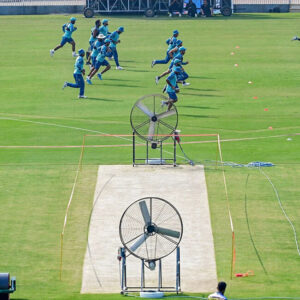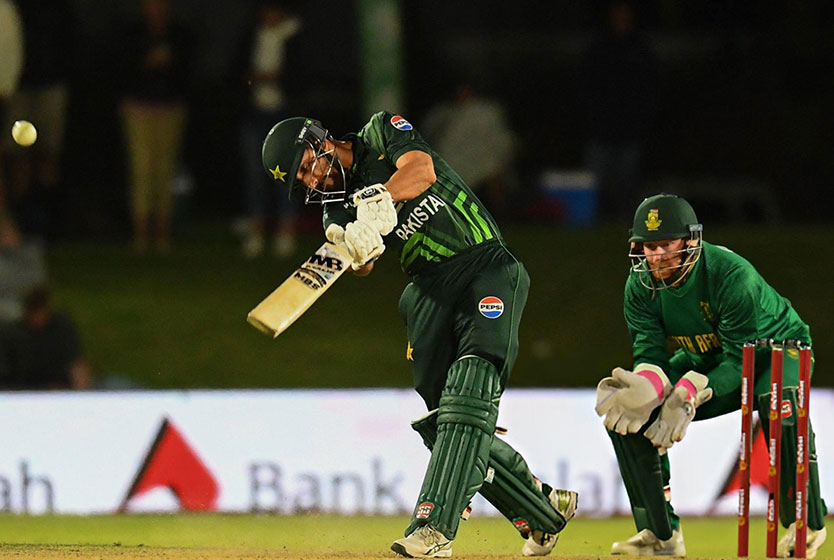
Test Cricket: A Post-Mortem
Anyone who has taken a look at the South African squad for their upcoming series in New Zealand can testify to one growing, nagging truth: Test cricket is dying. I know it, you know it, and most importantly, the three countries who play enough of it to care know it. Some may say they saw it coming. Some, our far-sighted oracles, the pundits of foresight, saw the flame start to sputter and quake long before it began dying out. But if there is one thing we want in cricket, it’s proactivity, taking action at the right time, uplifting those who need to be uplifted instead of propelling those who are already up there. And if there is one thing we do well here in the cricketing fraternity, it is looking for and successfully identifying blame. This is a classic whodunnit – Test cricket is dead: who killed it?
I’m just here to gather the evidence.
Suspect #1 – The Lack of Wanting to be Saved
I think of the Test-playing cricketing fraternity as a happy little family. (Emphasis on little.) They go to each other’s houses, knock back a few drinks, and make a few lovely memories under the setting sun. It works just like any other family would – the adults make the big decisions, plan the family trips, and decide where the kids will go to school. The kids watch and nod their heads, occasionally throw tantrums, and sometimes, just to humor them, the adults play along and let them think that they’re listening. Eventually, the children become disillusioned. They’re not happy about their curfews, the pocket money, how the adults take up way too much space on the dinner table. They become detached – suddenly, they’re just not interested. The adults are concerned. The family is weakening, and the adults have to save it. And this analogy has gone about as off the rails as their attempts to save it. But this is an essay about beating a dead horse – so I’ll continue.
One day, the father wakes up and decides to save the family. He will do it. He’s a hero, and he has the best of intentions, and surely everyone will follow suit. He switches things up. Suddenly, there is ice cream for dinner. No one has to wake up before noon if they don’t want to. If everyone just has fun, he thinks, they’ll be fine. But it doesn’t do much. The adults start having a lot more fun, yes, but only amongst themselves.
The thing about efforts to save Test cricket made by England (or Australia or India) – the heroes, the saviors, the imposing patriarchs at the head of the table, is that if they try hard enough, they can convince themselves they’re doing it. Has Bazball – or whatever variant of unconventional style of play you prefer – been entirely unsuccessful in what it set out to achieve? Of course not. It’s perfectly watchable, it does wonders for people who don’t have the attention span for tuk-tuk batting, and, most importantly, it’s super fun to make fun of. But will England save cricket by playing New Zealand every eight months and negotiating a rain-soaked Ashes series every two years? Will Australia save Test cricket by churning out a playlist of Mic’d Up compilations at the end of every Test summer? I doubt it. As long as the shiny, innovative toys of making Test cricket fun keep serving the few teams who can afford to innovate, the market for the toys won’t really expand.
Sure, England playing at 6 an over and pushing the other team to lash out in a similar way may make for good, refreshing, competitive viewing. But how sustainable is that? Saying that Test cricket needs saving, especially when it comes from the countries that play and control it the most, implies an acknowledgment that it is in a condition that requires it to be saved. Which would be a good first step – only if all the efforts made to ‘save’ it didn’t merely scratch the surface. Which brings me to…
Suspect #2 – The Big 3 Musical Chairs
Three is an important number. It clusters around us everywhere – musketeers, stooges, fates. Cricket is no different – and neither is the reason why it is dying. Diagnosing what’s wrong with England in ODIs, all the way back in 2022, English captain Ben Stokes had a simple answer: “Begins with S ends with E and has chedul in there as well”. Not to invoke the cardinal sin of format mixing, but I believe a similar ailment plagues Test cricket – but not for England, just for everyone else around them.
Even after the establishment of the WTC – meant to provide more context and generate more interest in the longest format – the Big Three play more Tests than anyone else. Out of the 19 Tests that have been played in the current cycle of the championship so far, 15 have involved at least one of India, Australia, or England. The number of games played by other teams is dwindling every cycle, whereas the smallest of Test-playing nations, those not fully established – Zimbabwe, Afghanistan, Ireland – barely play enough for their schedules to be analyzed. It is more or less common knowledge that cricket isn’t an entirely equitable sport. Disparities in revenue, power, and control become evident with each passing day – each rule tweaked to accommodate one of the bigger nations, and each tournament stoked and coddled to be adjusted to their convenience.
The last time England toured Bangladesh was in 2016. The last time Australia played Bangladesh was in 2017, and the last time Australia toured the West Indies was in 2015. The last time England, Australia, or India played Zimbabwe in a Test match was in 2003, 2004, and 2005 respectively. The disparities in cricket become even more striking, then, when it comes to the longest format – especially now that it is the one most sparsely played. The commitment of teams to save Test cricket may be glowing and unfaltering on the surface – but the choices made in terms of tours and actual games played may reflect something else entirely.
And all this – schedules and conflicts and gaps – are only concerned with the men’s game – where Test cricket may be dying, but the ‘ing’ at the end implies that it’s still somewhat alive. For women? Not so much. In the past ten years, a grand total of twelve (12) Test matches have been played in women’s cricket. Only two of them have involved a side not from the big three – South Africa. At least for men’s cricket, at least in an ideal world, there seems to be a sustainable way out. You can call for more equitable revenue distributions, better scheduling, and more matches for smaller teams against higher-ranked ones. But where does women’s cricket seek to build a Test fraternity that doesn’t involve an Ashes Test every few years?
Perhaps Test pundits and players alike, especially those belonging to the ‘greater’ nations, have arduous and laborious plans to save it – from a three-month Test-only window to big sixes amounting to 12 runs, to the championship final being a best-of-three affair. They are upset because we are killing the greatest format – to which I can only say: you made the sandwich.
Reviving a dead analogy – if a game is not good for the children, or the women, or those coming of age – then who is it for? Of course, all of this is contingent on believing in Test cricket puritanism. It is contingent on Test cricket needing to survive. It is revered as the greatest format by many, as real cricket in its true, original form. If other, faster, more “watchable” cricket is slowly displacing the red-ball waters, then is that a moral issue? Or just a circumstantial one?
Suspect #3 – The Lack of Strategic Timeouts
Perhaps the most prominent symptom of the fatal rot that infects Test cricket is this:
As I write this, three T20 leagues are happening concurrently across the world. South Africa named a squad of mostly unknown and several uncapped players for a Test series vs. New Zealand, ensuring that the cream of its cricketing crop stays available for the ongoing SA20. Last week, Mohammad Amir and Shaheen Afridi rotating the new ball for the Desert Vipers in the ILT20 made countless Pakistani fans’ eyes mist over with unfulfilled nostalgia, a materialization of what could have been. Babar Azam exchanged a few heated words with the opposing team’s wicketkeeper in the BPL (though the reason for that remains unclear), and it caused a lot of ruckus online (again, reason unclear). A few Afghan players decided against signing central contracts in order to maximize their availability for leagues. The international schedule is slowly adapting to be built around league schedules, most prominently the IPL.
It is a more or less acknowledged fact that the rise of bite-sized cricket is the single most acute threat to the throne of the Test match. While a 3-hour long game isn’t exactly short, for a sport that comprised mainly of either 5-day or 9-hour matches before it, T20 cricket deems itself the most “watchable.” League cricket brings with it the added incentive of gathering some of the best players from across nations under one marquee, as well as a competition to see who can conjure the most out-of-pocket ways to streamline a product sponsorship into the game. Most importantly, though, it provides financial opportunities for players that weren’t quite so plentiful before it, especially for smaller nations who play significantly less international cricket than their bigger counterparts.
A friend of mine once said that the slow demise of long-form cricket is sort of like that of cinema. Maybe people simply don’t have the time to sit through five days of the grind of the ball against an unflinching bat. Maybe – and I write this at the risk of being taken to the back of the Lord’s dressing room and shot in the leg – what Test cricket needs is a powerplay. A Tapal Tea strategic timeout. A few flashy no-ball sirens. Maybe it needs to follow Kevin Pietersen’s advice and make all the big sixes count as 12 runs. Maybe it’s time to bring out the colored kits.
But of course it isn’t…
The Alibi
As I write this, Shamar Joseph has led the West Indies to an incredible, unreal, magnificent win against Australia at the Gabba – a fortress breached by a man with a broken toe, 12 consecutive overs of ball after unflinching ball at pace. Test cricket is alive and well, says Ian Smith. Joseph does this at the heel of Australia’s Test Championship win, at the pinnacle of their streak of dominance at home, 12 months after West Indies were clean swept by this same side on Australian soil, after losing the last day/night Test by a whopping 419 runs. Is this, then, a dead sport? Or is it just one being forced into suffocation?
The thing about cliches of puritanism and exaltation is that most of the time, I see the appeal. You watch something like what the West Indies pulled off. Or you watch a batting-at-8 Aamir Jamal try his best to lone-warrior his way through a series a month ago. Or you watch India lose 6 wickets for no runs and still go on to win against the Proteas, or you watch New Zealand scurry its way to a one-run win against England. And you will know – there is nothing like Test cricket.
These moments aren’t miracles – they just don’t get to happen enough to not be miraculous. ‘Saving’ Test cricket isn’t really a matter of choice – it will likely make its own statements on the matter, unbridled by man, unaffected by strike rate. All world cricket needs to do, then, is just help Test cricket save itself. Of course, a lot has to change – both on levels individual and structural, both in philosophy and practice. I know that writing what countless others have written before – songs of praise for the benevolent greatness and unfiltered thrill of the greatest format – won’t do much for its chances on life support. But what I can say is that if Test cricket is dying – we may have to wait a while for the funeral.







Leave a Reply